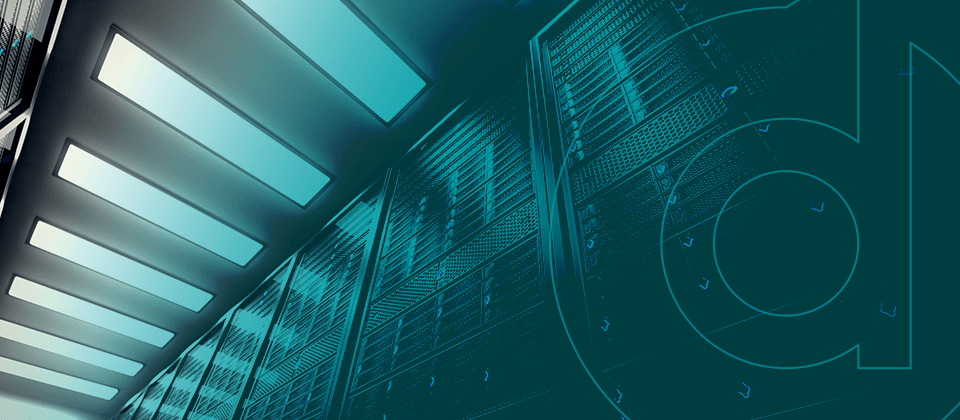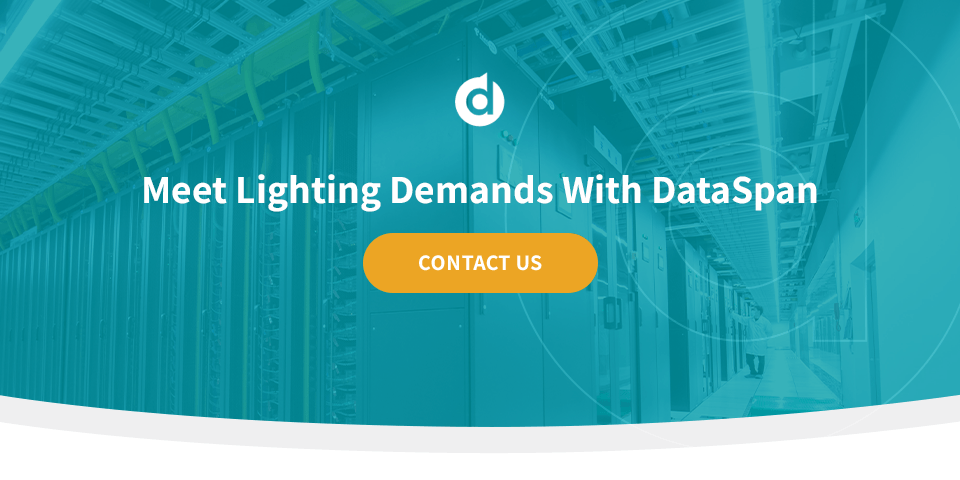
LED Lighting in Data Centers
Data centers generate vast amounts of carbon and heat during day-to-day operations. As a professional in the data industry, you know proper lighting is crucial for your facility’s safety, efficiency and operating costs. Daily operations rely on adequate lighting and meeting specific requirements to complete vital tasks. However, choosing the right lighting source can increase your facility’s savings and empower your team to contribute to more sustainable energy use practices.
Innovative systems and cost-effective LED options make switching to these systems desirable. LED offers several benefits over traditional fluorescent or incandescent lighting and can deliver additional benefits for the data center industry. Evaluating your lighting needs, operational inefficiencies and current practices will help you determine the best way to implement LED lighting to maximize these benefits.
Several states in the US, have passed laws that aim to phase out the sale of standard pin-base fluorescent tubes in addition to screw-base compact fluorescent lights (CFL). It is expected this year, even more state legislatures will take the opportunity to pass similar regulations that assist businesses with cutting utility costs, combatting carbon emissions, and protecting the environment.
Importance of LED Lighting in Data Centers
As the backbone of digital infrastructure, data centers play a crucial role in housing and securing information systems. Due to the growing need for enhanced data security, the data center industry has expanded to encompass a significant amount of businesses and organizations. Experts estimate that data centers contribute about 1% of global energy consumption. With so many facilities performing crucial tasks daily, identifying operational efficiencies can deliver many industry savings.
Swapping fluorescent lighting with LED options is a small step that delivers immense economic and environmental benefits. LED lights empower facilities to create more electrical capacity while lowering the overall building demand. This solution helps lower commercial building energy expenditures and enables facilities to meet their operational needs while preparing for the upcoming fluorescent phaseout.
Using LED lighting also empowers facilities to incorporate various lighting controls to bring additional cost savings and energy efficiency. These controls and systems support energy management while meeting occupant needs. Facility owners and managers can use these controls to manually reduce lighting and control output loads or use automation to set light levels, occupancy requirements and run times.
Power Efficiency With LED Lighting
One of the most significant advantages of LED lighting is the enhanced power efficiency. This lighting solution emits light by creating a bond between negative and positive charges with an electrical current. This process is more efficient than the incandescent process, which involves heating an element to produce light. LED lights also emit direct light, but you can manipulate the lighting so it is visible at various angles. You can control the location, shape and size of LED bulbs to meet unique requirements while requiring less energy usage. Alternatively, incandescent lights deliver diffused lighting, which spreads the light during operation.
Energy industry leaders have deemed LED lighting ideal for industrial and commercial use because of its increased lifetime, energy savings and efficiency. LED lights use as much as 90% less energy than incandescent bulbs, and various product types are available to meet industry needs. These lights can replace 100W, 75W, 60W and 40W incandescent bulbs, and you can use them in indoor and outdoor environments, including under cabinets and in recessed fixtures.
Lighting Control Strategies for Enhanced Energy Savings
Implementing lighting control strategies can further reduce your energy use to deliver greater cost savings. Common control strategies include:
- Occupancy sensing: Room occupants trigger sensors to ensure the lights are on when people are near. Implementing occupancy sensing in rooms that receive minimal use can save energy and costs by preventing the lighting of an empty space.
- Scheduling: You can use the date and time to program lighting changes. Large spaces use this strategy to meet changing lighting demands and ensure safety and security in regularly occupied spaces.
- Dimming controls: Occupants can use these controls to adjust the level of light they need for task completion. Dimming controls can make occupants more comfortable and help you save energy when bright lighting is unnecessary.
- Networked lighting controls: This strategy involves blending various lighting control strategies to meet your space requirements and needs. Combining strategies creates a flexible system that can maximize space use and comfort.
- Energy monitoring: Facilities can use energy monitoring platforms to identify areas using vast amounts of energy. This information can drive conservation efforts, delivering more financial savings.
- Demand response programs: These programs reduce lighting loads automatically during periods of high usage or peak usage times. Demand response programs rely on load measures to determine starting and stopping points.

Other Benefits of LED Lighting for Data Centers
LED lighting delivers many advantages for all industries. As the most energy-efficient lighting technology on the market, LED solutions deliver longer life spans and are more environmentally friendly. Data centers can use LED lighting to experience further benefits, including:
- Reducing heat: Incandescent bulbs release as much as 90% of energy as heat, and CFLs release up to 80% of energy as heat. Alternatively, LED bulbs produce very little heat. Data centers often have in-house servers, which have unique temperature requirements. Ideally, server rooms should range between 68 and 71 degrees Fahrenheit with roughly 50% relative humidity. Using LED lighting can reduce unwanted heat and give you better temperature control.
- Lowering maintenance costs: LED lights can last 30 times longer than traditional bulbs, delivering significant savings on maintenance and operational costs. Network devices, cooling systems, servers and storage devices are crucial for daily operations, and each has unique maintenance costs. Lowering maintenance costs for lighting can reduce your overall spending and allow you to reallocate funds to other components and devices.
- Improving security: Data centers must be reliable and secure, and essential lighting considerations can enhance security to protect valuable information and devices. LED lighting provides the flexibility to illuminate a space when necessary, manipulate how much light a space receives and automate functions for maximum safety and security.
- Featuring innovative designs: Another benefit of LED lights is their flexible design. You can find lighting fixtures to deliver functional advantages for unique spaces and use various color temperatures to meet any application. The lack of infrared or ultraviolet emissions also ensures you can safely illuminate sensitive items.
Meet Lighting Demands With DataSpan
Optimizing your data center with LED lighting can significantly impact your spending, energy usage and operational efficiency. With DataSpan, you can find customized solutions to overcome any challenge, including lighting systems. We offer comprehensive power solutions to ensure your facility can become more dynamic and meet your growing demands. We represent industry-leading manufacturers, ensuring you can access the best options for power efficiency, reliability and safety.
We have over 50 years of experience and support from more than half of the Fortune 1000, so you can feel confident in our ability to optimize your data center. Contact DataSpan to find a solution for your lighting needs.

About the Author: Alex von Hassler’s long term focus is the continued testing, learning, and deployment of modern IT solutions. During his years as a DataSpan team member, his responsibilities grew from managing Salesforce CRM to improving system security, creating marketing initiatives, as well as providing continued support to the highly motivated and experienced team in an ever-changing industry. As DataSpan evolves to provide the best-fitting IT solutions to its customers, Alex von Hassler continues to hone his skills in the world of web-based ERP systems, security, and best customer engagement practices. Empowering such a dynamic team with the right tools provides him with enormous gratification.








